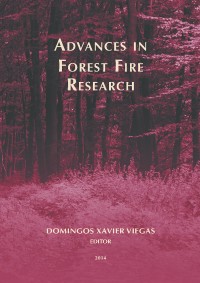Please use this identifier to cite or link to this item:
https://hdl.handle.net/10316.2/34304| DC Field | Value | Language |
|---|---|---|
| dc.contributor.author | Papakosta, Panagiota | |
| dc.contributor.author | Scherb, Anke | |
| dc.contributor.author | Zwirglmaier, Kilian | |
| dc.contributor.author | Straub, Daniel | |
| dc.date.accessioned | 2014-10-24T11:05:05Z | |
| dc.date.accessioned | 2020-09-09T21:31:20Z | - |
| dc.date.available | 2014-10-24T11:05:05Z | |
| dc.date.available | 2020-09-09T21:31:20Z | - |
| dc.date.issued | 2014 | - |
| dc.identifier.isbn | 978-989-26-0884-6 (PDF) | |
| dc.identifier.uri | https://hdl.handle.net/10316.2/34304 | - |
| dc.description.abstract | A probabilistic spatio-temporal model for fire risk prediction based on Bayesian networks is presented. It predicts daily fire risk on houses and vegetated areas in the mesoscale (1 km² spatial resolution). The BN model consists of three parts. (1) The fire occurrence model, which involves as predictive variables the weather conditions (expressed by the Fire Weather Index - FWI), land cover types, population and road density. It predicts the probability of a fire occurring daily in each 1km². (2) The fire behavior model, triggered by the occurrence model, which includes the influence of actual and past weather conditions, fire behavior indices and topography. (3) The damage model, which predicts the expected losses relevant to houses and vegetated areas conditional on a fire hazard. Vulnerability (resistance capacity) and exposure (values at risk) indicators are used to quantify the damage, which also depends on the fire suppression efficiency. The final output of the model are the expected house damage costs (the risk to houses) and the restoration costs for the vegetation (the risk to vegetated areas). The BN model is exemplarily established for Cyprus. The conditional probability distributions of the BN variables are populated with data from the time period 2006-2009, regression model results and expert knowledge. Data from 2010 for Cyprus are used as verification dataset. The results are shown in daily maps with 1 km² spatial resolution. | eng |
| dc.language.iso | eng | - |
| dc.publisher | Imprensa da Universidade de Coimbra | por |
| dc.relation.ispartof | http://hdl.handle.net/10316.2/34013 | por |
| dc.rights | open access | - |
| dc.subject | Bayesian networks | eng |
| dc.subject | Bayesian networks | eng |
| dc.subject | GIS | eng |
| dc.title | Estimating daily fire risk in the mesoscale by means of a Bayesian network model and a coupled GIS | por |
| dc.type | bookPart | por |
| uc.publication.firstPage | 725 | - |
| uc.publication.lastPage | 735 | - |
| uc.publication.location | Coimbra | por |
| dc.identifier.doi | 10.14195/978-989-26-0884-6_81 | - |
| uc.publication.section | Chapter 3 - Fire Management | por |
| uc.publication.digCollection | PB | por |
| uc.publication.orderno | 81 | - |
| uc.publication.area | Ciências da Engenharia e Tecnologias | por |
| uc.publication.bookTitle | Advances in forest fire research | - |
| uc.publication.manifest | https://dl.uc.pt/json/iiif/10316.2/34304/211387/manifest?manifest=/json/iiif/10316.2/34304/211387/manifest | - |
| uc.publication.thumbnail | https://dl.uc.pt/retrieve/11172902 | - |
| uc.publication.parentItemId | 53868 | - |
| uc.itemId | 70286 | - |
| item.grantfulltext | open | - |
| item.fulltext | With Fulltext | - |
| Appears in Collections: | Advances in forest fire research | |
Files in This Item:
| File | Description | Size | Format | |
|---|---|---|---|---|
| 978-989-26-0884-6_81.pdf | 1.99 MB | Adobe PDF |  |
Items in DSpace are protected by copyright, with all rights reserved, unless otherwise indicated.
